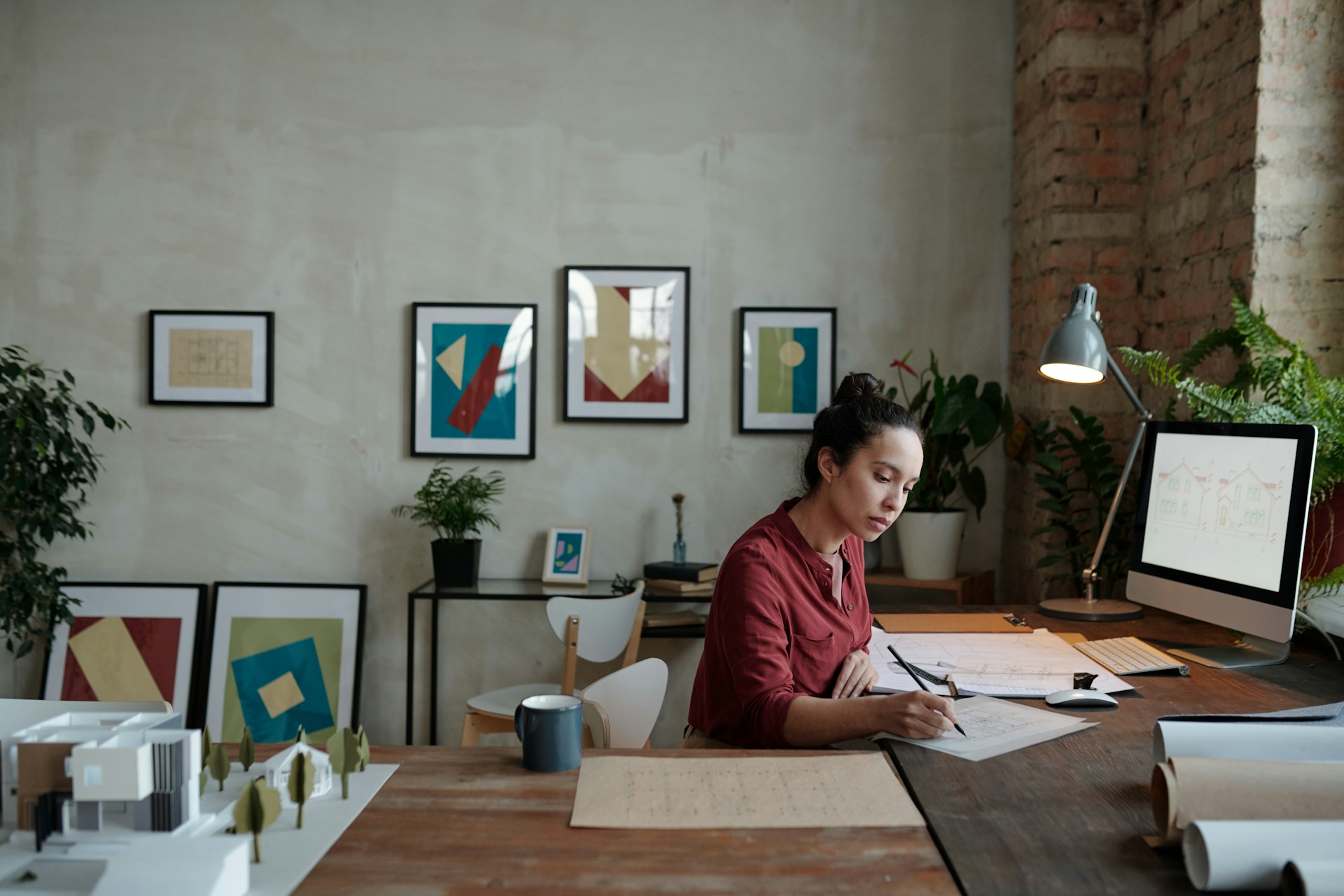For years, I operated my floral design business with what I now recognise as a subtle but limiting belief—that creativity and business were separate forces that needed to be balanced. I’d pour my heart into designing, then reluctantly switch to “business mode” for contracts and pricing conversations.
What I didn’t realise was how much this invisible division was constraining both aspects of my work.
Recently, while hosting small group conversations about The Base Notes handbook (launching May 29th!), I was struck by how quickly creative entrepreneurs recognised this pattern in their own businesses—and how transformative it can be when they begin to dissolve this artificial boundary.
The False Divide
The belief that business and creativity exist in opposition runs deep. We worry that too much focus on business might compromise our creative integrity. We fear that structures and systems might somehow restrict our artistic freedom. We sometimes even wear the badge of being “not very business-minded” as if it validates our creative credentials.
A jewellery maker recently described her initial approach: “I saw business as something I had to do so I could make my designs.” Business tasks were necessary evils that took time away from her “real work” in the studio.
But over time, she experienced a profound shift. She began approaching her business decisions with the same creative mindset she brought to her jewellery design—seeing challenges as design problems to solve, bringing her aesthetic sensibility to her client experience, applying her material innovation to her business model.
“I realised they’re not separate at all,” she told me. “My design work has actually improved because I’m thinking more holistically about who will wear it and how they’ll discover it.”
Creative Business Decisions
When we start approaching business decisions as creative opportunities rather than admin burdens, everything shifts. The interior designer who reimagined her client presentations, bringing her design sensibility to proposals and contracts. The chef who applied his culinary creativity to solve a business challenge—maintaining connection with diners between visits—by creating a beautiful seasonal recipe journal.
These aren’t examples of creative people becoming “more business-focused” in a conventional sense. They represent creative entrepreneurs applying their existing strengths to business challenges—bringing their natural problem-solving abilities to every aspect of their work.
When Structure Creates Freedom
Another powerful realisation: business structures and creative freedom aren’t opposing forces. In fact, the right structures can enhance creative freedom rather than restrict it.
Writers who establish regular routines find they can access creative flow more consistently. Designers who create clear processes for client projects have more mental space for innovative thinking. Artists who set boundaries around studio time produce more cohesive bodies of work.
The key is that these structures aren’t imposed from outside or borrowed from conventional business models that don’t match how creative work happens. They’re thoughtfully designed to support your specific creative process—structures that reflect how you naturally work best.
The Client Relationship Evolution
When we integrate creativity into every aspect of client relationships, clients don’t just value the deliverables; they value the entire experience of working with us.
A web designer transformed her client experience by applying the same user-centred design thinking she brought to websites. Instead of following standard agency processes, she reimagined each client touchpoint through the lens of user experience—considering what information clients needed at each stage and how to make each interaction intuitive.
This isn’t just a nice idea—it’s smart business. According to a 2024 Salesforce survey, 88% of customers say the experience a company provides is as important as its products or services. McKinsey research shows that companies excelling in personalisation can boost revenue by up to 30%.
Financial Integration
Perhaps the most transformative integration happens around money—pricing, sales conversations, and business models.
A photographer who had been charging standard hourly rates because that seemed like the “proper business approach” redesigned her pricing around value rather than time. Not only did her income increase substantially, but her creative freedom expanded too. Without the pressure to fill specific time blocks, she could focus entirely on creating the best possible images, however long that took.
This wasn’t about becoming “more business-minded” in a conventional sense. It was about creating a business model that authentically reflected her creative approach.
Moving Toward Integration
If you’re feeling a separation between the creative and business aspects of your work, here are simple steps toward greater integration:
- Identify where you feel the disconnect most strongly—communications, pricing, marketing?
- Apply your creative problem-solving—how would you approach a business challenge if it were a creative project?
- Look for natural connections—if you have an eye for composition, how might that inform your proposals or marketing?
- Reimagine one business process—choose a single aspect, like your client welcome process, and redesign it to better reflect your creative approach.
- Seek inspiration from your field—how could principles from your creative discipline inform your business decisions?
The most beautiful outcome of this integration is the confidence it creates. When your business approach authentically reflects your creative values, you no longer need to “switch personas.” Everything feels coherent, aligned, and genuinely yours.
As one jewellery designer put it: “When I stopped trying to be ‘business-like’ in a way that felt foreign to me and instead brought my design sensibility to every aspect, everything got easier. Not because the work became less challenging, but because it all finally felt like mine.”
Where in your business could you bring more of your creative thinking? What aspect might be transformed if you approached it with the same creative sensibility you bring to your core work?
I’d love to hear your thoughts in the comments below or over on Instagram.

Comments +